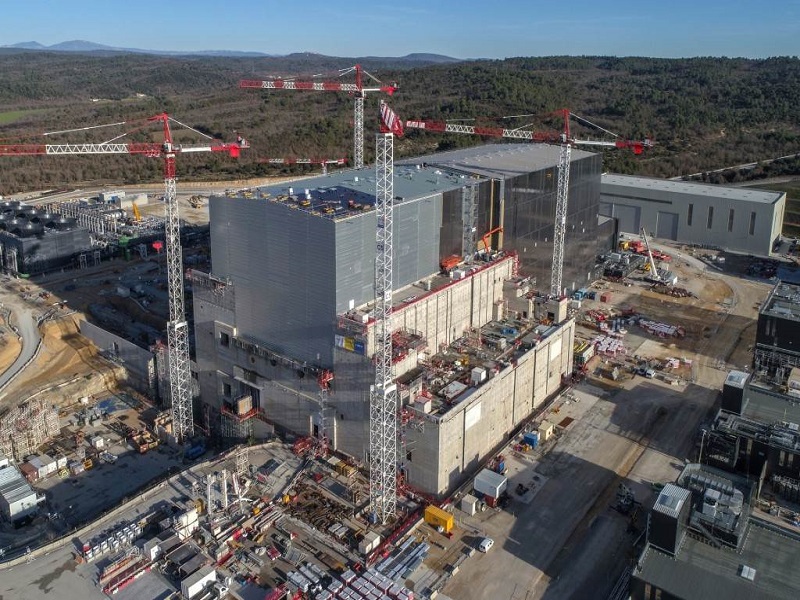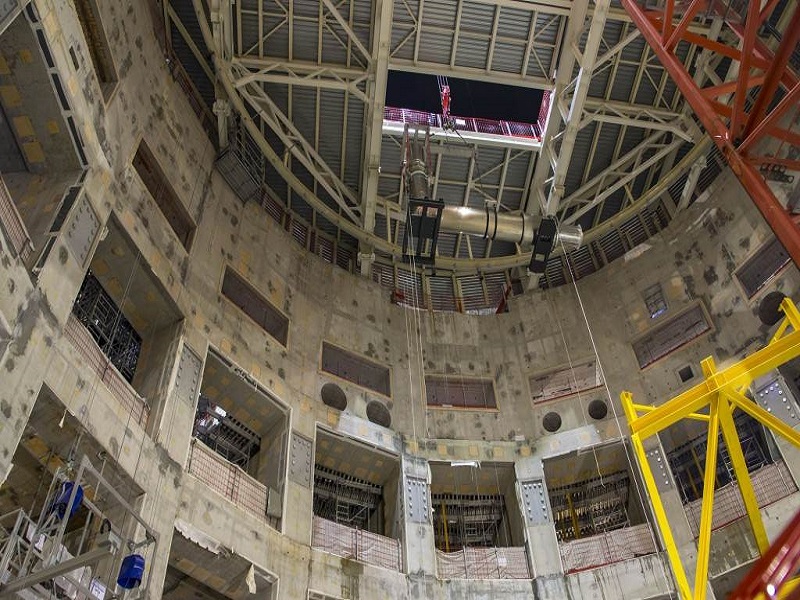International Thermonuclear Experimental Reactor (ITER) is a nuclear fusion demonstration project under construction on a 180ha site in Saint-Paul-lez-Durance in southern France.
Established in 2007, the ITER Organization is a collaborative energy project involving 35 countries. It received the nuclear power operator license from the French authorities in 2012.
The seven domestic agencies of the ITER include the European Union, India, Japan, South Korea, China, Russia, and the US. Fusion for Energy is the participant in the ITER project from the European Union.
The project will generate 500MW of fusion power with an input heating power of 50MW. More than two-third of the project work laid-out for achieving first plasma reaction in December 2025 was completed by the end of 2019.
Project Gallery
-

ITER nuclear fusion demonstration project is located on a 180ha site in Saint Paul lez Durance in south-eastern France. Image courtesy of ITER Organisation.
-

ITER Tokamak is designed to generate 500MW of energy from input energy of 50MW. Image courtesy of ITER Organisation.
-

The project is scheduled to achieve first plasma in December 2025. Image courtesy of ITER Organisation.
ITER nuclear fusion demonstration project make-up
The ITER project includes a 400,000t Tokamak complex comprising of the Tokamak building, diagnostics building and a tritium building. The Tokamak complex is a seven-storey structure that is 120m long, 80m wide and has a height of 73m.
The complex is made of reinforced concrete and supported on aseismic isolators. It houses more than 30 different plant systems including ITER assembly building, radio frequency heating building, cryoplant, compressor and coldbox building, control buildings, and three bridges. In addition, the complex includes heating, ventilation and air conditioning facilities, and a site services building.
The Tokamak building is the central building in the Tokamak complex, which houses the ITER Tokamak.
The five-storey diagnostics building will contain the electronic systems to receive, record and interpret signals from diagnostic instruments placed near the ITER vacuum vessel. The tritium building performs hydrogen isotope separation and provides fuel for the vacuum vessel.
The civil engineering works on the Tokamak complex were completed in November 2019.
ITER Tokamak
Tokamak, is a Russian acronym, which means toroidal or doughnut-shaped chamber with magnetic coils. The various components of the ITER Tokamak include vacuum vessel, cryostat, electromagnet system, blanket modules and divertors.
Nuclear fusion takes place in the vacuum vessel of the Tokamak when two hydrogen isotopes, deuterium and tritium, react to create an electrically charged gas called plasma at temperatures of 150 million degree Celsius. The vacuum vessel can hold 840m3 of plasma.
The fusion reaction continues for long duration by the heat generated in the plasma. The Tokamak uses magnetic field generated by the electromagnet system to confine and control the plasma.
ITER Tokamak vacuum vessel
The ITER Tokamak vacuum vessel is a doughnut-shaped stainless steel vessel. It has a height of 11.4m, outer diameter of 19.4m and an interior volume of approximately 1,400m3.
The vacuum vessel will have double walls and the space between them will be filled by approximately 9,000 modular blocks, which act as a shield from neutron radiation. Borated and ferromagnetic stainless steel will used to make the blocks, which weigh up to 500kg each.
A cylindrical vacuum chamber called cryostat will house the vacuum vessel and the electromagnet system. The volume of cryostat is 16,000m³ and internal diameter is 28m. It is made of stainless steel and weighs approximately 3,850t.
The space between the vacuum vessel and cryostat will be filled with two layers of thermal shielding made of stainless steel panels. Europe will deliver five vacuum vessel sectors and the remaining four will be supplied by South Korea. The modular blocks will be supplied by India, which is also responsible for supplying the cryostat.
The inner wall of the vacuum vessel is covered by blanket modules to protect the structure from heat energy and fast-moving neutrons produced during nuclear fusion. As many as 440 blanket modules made of beryllium, high-strength copper and stainless steel will cover an area of 600m2 and provide nuclear shielding.
A divertor will be placed at the bottom of the vacuum vessel to remove heat released during fusion reaction, protect walls from fast-moving neutrons, and minimise plasma contamination. Tungsten will be used for manufacturing the divertor.electromagnet system
The ITER Tokamak will feature a 10,000t electromagnet system, which will have stored magnetic energy of 51 Giga Joules (GJ). The electromagnet system comprises of toroidal field magnets, poloidal field magnets, a central solenoid and correction magnets.
The vacuum vessel will be surrounded by 18 D-shaped toroidal field magnets that confines the plasma within the vessel. The magnets produce 41GJ of magnetic energy and a maximum field of 11.8 tesla. Each magnet weighs approximately 360t.
The project requires 19 toroidal field magnets including one spare. Japan is responsible for procuring ten toroidal field coils and the remaining nine will be supplied by Europe.
The poloidal magnet system consisting of six ring-shaped poloidal field coils is located outside the torroidal magnet system to shape the plasma. The magnets produce 4GJ of magnetic energy and a maximum field of 6 tesla.
The central solenoid consists of six independent coil packs made of niobium-tin cable, which enabls a powerful current to be generated in the plasma. It will have 6.4GJ of stored magnetic energy and a maximum field of 13 tesla. Central solenoid is being manufactured by the US, while Japan had supplied niobium-tin coils.
A total of 18 correction coils inserted between the toroidal and poloidal field coils will correct any magnetic field errors caused by main magnets due to imperfections in their manufacturing or their position. China will supply the correction coils.
Fuel for ITER Tokamak
Deuterium and tritium will be used as fuel for ITER Tokamak. Deuterium can be extracted from seawater, while tritium is a rare mineral and small quantities are produced during the nuclear fission reaction in Canada Deuterium Uranium (CANDU) reactors.
The tritium available globally will be sufficient for the operations of ITER for only 20 years. ITER’s Test Blanket Module programme is responsible for testing tritium breeding concepts by mounting lithium blanket modules inside the ITER vacuum vessel.
Scientifically, the neutron produced in the fusion process can react with lithium-6(2) to produce helium and tritium along with huge amount of heat energy. The commercial success of ITER concept depends on the production of tritium using lithium blanket modules.
Financing details
An estimated investment of £15.5bn ($22.6bn) is being made in the project. Europe is making 45.46% contribution to the total project investment, while the remaining six members are contributing 9.09% each.
The ITER members are making in-kind contributions to the project by supplying various parts, systems and building facilities. The in-kind contributions account for approximately 90% of the total project cost and the remaining 10% is through cash.
Contractors involved
The VFR consortium is responsible for the construction of the main buildings at the Tokamak complex. The consortium comprises of VINCI Construction Grands Projets, Razel-Bec, Dodin Campenon Bernard, Campenon Bernard, GTM, Chantiers Modernes, and Ferrovial Agromanis.
ITER-India, the ITER project participant from India, awarded a contract to L&T Heavy Engineering, a subsidiary of Larsen & Toubro, to design, manufacture and install ITER Cryostat in August 2012. MAN Energy Solutions and SPIE Batignolles TPCI are subcontractors for this project.
Mitsubishi Heavy Industries (MHI) will manufacture the inner coil structures for all 19 toroidal field coils.
